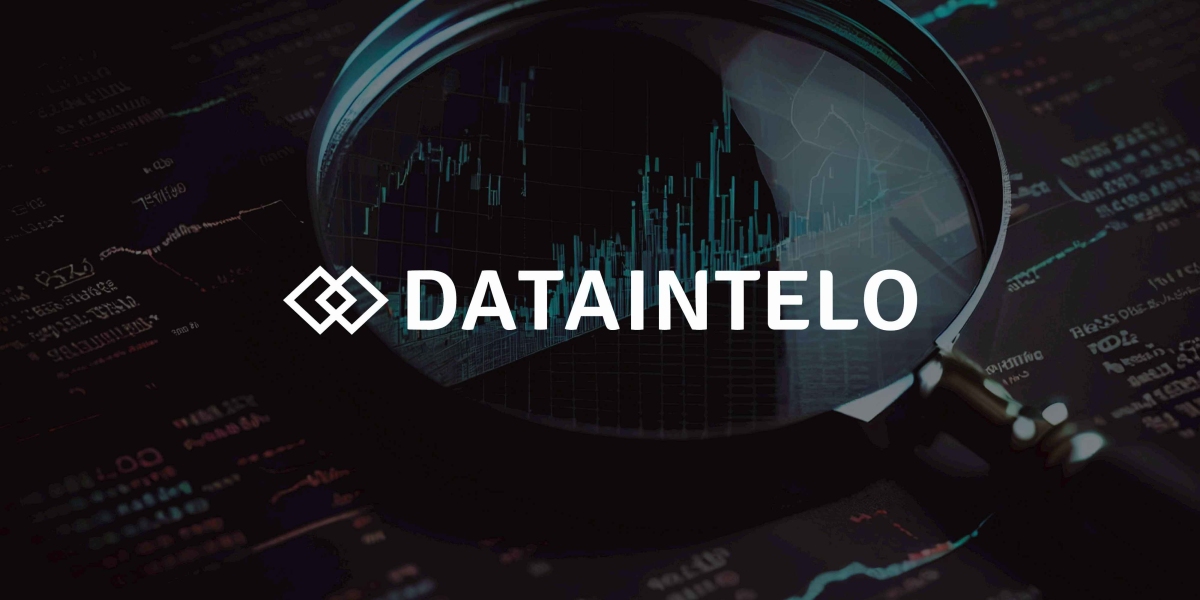The X-ray Diffractometer (XRD) Market is experiencing a significant uptrend, driven by the growing demand for advanced material characterization techniques in industries such as pharmaceuticals, electronics, and energy. XRD instruments have become essential tools in research and quality control labs, offering precise crystallographic information for a wide range of materials.
According to Dataintelo’s latest findings, the global X-ray Diffractometer (XRD) Market was valued at USD 3.4 billion in 2023 and is projected to surpass USD 5.7 billion by 2032, registering a CAGR of 5.8% during the forecast period. This growth is underpinned by the increasing emphasis on nanotechnology, drug discovery, and renewable energy applications, where XRD is vital.
The integration of AI-powered software and automation in XRD instruments is also expanding the market’s capabilities, enabling faster, more accurate analyses across laboratories and industrial settings.
Request a Sample Report: https://dataintelo.com/request-sample/104681
Key Drivers Boosting the X-ray Diffractometer (XRD) Market
The XRD market is benefiting from several influential drivers that are expanding its adoption across academic, industrial, and clinical settings:
Rising Research Activities: Growing investments in materials science and nanotechnology research are increasing the need for high-performance analytical instruments like XRD.
Technological Advancements: The integration of user-friendly interfaces, portable devices, and advanced detectors is making XRD systems more accessible and efficient.
Quality Control in Manufacturing: XRD is essential in ensuring product consistency in sectors such as metallurgy, semiconductors, and pharmaceuticals.
Emerging Applications in Forensics and Environmental Testing: Novel use cases are emerging as XRD proves valuable in detecting contaminants and identifying unknown materials.
These factors are reshaping the landscape of analytical instrumentation and driving the XRD market forward.
Market Restraints Hindering Wider Adoption
Despite its strong potential, the X-ray Diffractometer (XRD) Market faces certain limitations that may slow down adoption, especially in developing regions:
High Equipment Cost: XRD systems are capital-intensive, making them less accessible to small laboratories and institutions with limited funding.
Requirement for Skilled Personnel: Operating and interpreting XRD data requires expertise, which limits usage in facilities lacking trained professionals.
Regulatory Hurdles: In highly regulated industries, compliance and approval processes can delay the deployment of new systems or upgrades.
Competition from Alternative Technologies: Techniques such as Raman spectroscopy and electron microscopy sometimes offer quicker or more detailed analysis for specific applications.
Mitigating these challenges will require investment in training, affordability solutions, and broader awareness of XRD’s capabilities.
View Full Report: https://dataintelo.com/report/x-ray-diffractometer-xrd-market
Unlocking Opportunities in the XRD Market Landscape
The future of the XRD market lies in innovation and its expanding role across evolving industries:
Miniaturized and Portable XRD Devices: Lightweight, portable solutions are enabling on-site analysis in fields like archaeology, mining, and construction.
AI and Automation Integration: AI-powered data interpretation and automation are reducing the need for extensive manual calibration, making XRD more user-friendly.
Applications in Battery and Semiconductor Development: As demand for clean energy and electronic miniaturization rises, XRD will play a crucial role in component design and testing.
Emerging Market Expansion: Developing economies are increasingly investing in R&D infrastructure, paving the way for broader adoption of XRD technology.
These opportunities are creating new revenue streams and diversifying XRD’s market footprint globally.
Market Segmentation Insights
To better understand the evolving dynamics of the X-ray Diffractometer (XRD) Market, it’s essential to examine its key segments:
By Product Type:
Powder XRD
Single Crystal XRD
High-Resolution XRD
By Application:
Pharmaceuticals
Materials Science
Electronics
Chemical Industry
Academia and Research Institutions
By End User:
Industrial
Academic
Government Laboratories
Contract Research Organizations (CROs)
Among these, powder XRD systems account for the largest market share due to their wide applicability and cost-effectiveness, especially in pharmaceutical and material science applications.
Check Out the Report: https://dataintelo.com/checkout/104681
Regional Analysis: Global Hotspots of XRD Adoption
The adoption of X-ray diffractometers varies significantly across regions, influenced by technological infrastructure and research priorities:
North America: Leads the market due to significant R&D investments and a strong presence of academic and industrial research centers.
Europe: Maintains a robust market presence, with rising demand in sectors like automotive, aerospace, and environmental science.
Asia-Pacific: Exhibiting the fastest growth, driven by industrial expansion, academic development, and government-supported research in China, Japan, South Korea, and India.
Latin America and Middle East & Africa: Emerging regions are beginning to invest in analytical technology, focusing on mineral exploration and environmental testing.
These regional trends are shaping the global demand for precise, efficient material analysis tools like XRD.
Key Trends Defining the Market’s Future
The X-ray Diffractometer (XRD) Market is rapidly evolving, with several trends positioning it for long-term success:
Green Energy Revolution: XRD is crucial in the development of energy storage solutions, including lithium-ion batteries and hydrogen fuel cells.
Pharmaceutical Innovation: The growing complexity of drug formulations and polymorphic forms is boosting the demand for advanced structural analysis.
Digital Transformation of Labs: Cloud-based data management and remote access tools are redefining how XRD instruments are used and maintained.
Cross-Disciplinary Research Demand: As research becomes more interdisciplinary, the demand for versatile instruments like XRD is increasing across varied scientific domains.
These trends point to a future where XRD plays a foundational role in innovation, quality control, and scientific discovery.
Market Outlook: Toward Smarter and Accessible Solutions
The global X-ray Diffractometer (XRD) Market is set to thrive as industries pivot toward precision, sustainability, and innovation:
Market value expected to exceed USD 5.7 billion by 2032.
Growth driven by applications in energy, electronics, life sciences, and geosciences.
Compact and automated XRD units to witness increased adoption.
Asia-Pacific to dominate future market expansion with aggressive R&D spending.
The expanding application scope and rising technology investments signal a dynamic and resilient future for the XRD industry.
Conclusion
The X-ray Diffractometer (XRD) Market is at the forefront of scientific and industrial progress, delivering accurate, efficient, and non-destructive material analysis. As demand for detailed structural data grows across sectors, the market is set to experience sustainable, innovation-driven expansion.
With the integration of AI, automation, and digital connectivity, XRD systems are becoming more accessible, scalable, and indispensable to research and production workflows worldwide.






